Table of Contents
How does a dishwasher work?

Once a dishwasher has been installed – connected to a water and power supply – the owner will insert dirty dishes into the appliance, will then insert detergent and will finally select a wash programme.
The dishwasher will then spray a mix of water and detergent through small ‘jets’ installed into the internal compartment of the dishwasher.
The dirty dishes will be cleaned by hot soapy water, and once the dishes are clean, they will be finally rinsed with hot water to remove any detergent from the dishes.
A standard dishwasher is capable of cleaning pots, dishes, pans, utensils and glassware, and can handle any kind of food that is left upon the objects.
It is sometimes asked whether dishwashers are capable of cleaning plates that have handled spicy food, such as Indian cooking, and they are. Dishwashers typically come with a range of wash programs to handle the different types of objects inserted into it.
However, the way in which the dishwasher works is the same: hot water, mixed with detergent, will be sprayed into the internal compartment through small jets.
Dishwashers are capable of removing the vast majority of grease, oil and spices left after cooking; a dishwasher usually has an ‘intensive’ wash program to remove ‘caked’ on residues.
It will typically take a dishwasher between 30 minutes and 2 hours to finish a wash program, and once the wash program is finished, the dishes will be dry and there will be no soap left upon them.
What can I put into a dishwasher?
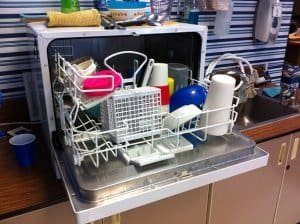
The following types of materials can be placed inside of a dishwasher:
1. steel
2. ceramic (that are suitable for a microwave)
3. glass (that are suitable for a microwave)
4. plastic (that are suitable for a microwave)
5. porcelain (that are marked as dishwasher ‘safe’)
One question that is often asked is whether wood can be placed into a dishwasher; due to many utensils, pots and pans having a wood handle. Wood can be placed into a dishwasher as long as it was not glued into place or if the wood is varnished.
The pressure of a dishwasher can remove the varnish from the item, or separate the glue from the item in question. Both glue and varnish can effect the internal components of a dishwasher and stop it from operating.
Due to most wood handles being glued into place, most items with a wood handle are not suitable for a dishwasher, but utensils made completely from wood usually are.
The size of the internal compartment of a dishwasher will dictate the type of items that can be placed inside the dishwasher. Pots and Pans will not fit into small compact dishwashers, but large dishwashers should be able to clean: pots, pans, dishes, glasses, and cooking utensils.
The cooking utensils will need to be made out of steel or stainless steel, most dishwasher manufacturers do not recommend placing utensils into a dishwasher that are made from: brass, gold, silver, or aluminum.
The same thing applies to pots and pans that are made from these materials, or from copper.
How long will a dishwasher last before it needs replacing?
It is difficult to give an exact figure, because it depends on the manufacturer, how regularly the dishwasher is used, the quality of the installation, and the quality of any maintenance work carried out on the dishwasher.
However, in 2007, the National Association of Home Builders (USA) stated that a dishwasher should last between 7 and 12 years. Bosch, generally accepted as a quality manufacturer,
Have indicated that they expect their dishwashers to last, on average, 10 to 12 years before the appliance needs replacing with a new dishwasher.
It is assumed by skeptics in the general public, although never admitted by manufacturers, that design failure is built into appliances at large, and also into dishwashers. In the 1950’s, for example, quality appliances were built to last, and with proper maintenance could last for decades.
Of course, the line of argument goes: that if a product lasts a lifetime it won’t need replacing and that is not in the interests of the manufacturers.
Other commentators have stated that the reason appliances don’t last as long as previously is due to the complex nature of modern appliances: more components can malfunction, and appliances are assembly built from components from multiple suppliers who differ in build quality.
Whatever the rationale is for the build quality of dishwashers, most commentators do not expect the lifespan of dishwashers – and appliances at large – to increase but to decrease. At present, most manufacturers – Bosch, Indesit, Zanussi, Whirlpool and Hotpoint – give a lifespan of 8 to 12 years for their dishwashers.
How much water do dishwashers use compared to hand washing?

It will depend on the dishwasher in question, the wash programme is uses, and the size of the hand wash.
That said, some dishwasher manufacturer have ran tests that compare, on average, the water usage of a dishwasher and a hand wash; when cleaning the same number of items.
Bosch have stated that their dishwashers will use 10-14 litres of water in comparison to 30-40 litres of water used to clean the same amount of items by hand washing them in a sink.
Therefore, it is safe to state that a dishwasher uses at least half the amount of water that hand washing does, and it could save up to four times as much; depending upon the dishwasher model and the wash program used.
It should be noted, however, that a dishwasher also uses electricity, therefore, any economic benefit – in terms of resources used – should combine the water and power usage when compared to hand washing. Dishwashers use 1-2 kW of energy every wash.
For people who have never owned or used a dishwasher: they may wonder how a dishwasher is installed to their water supply.
A dishwasher does not require complicated plumbing work, but it will require an outlet tap and an inlet tap to supply itself with water and to disperse the dirty water at the end of the wash cycle.
Are dishwashers more hygienic than hand washing?
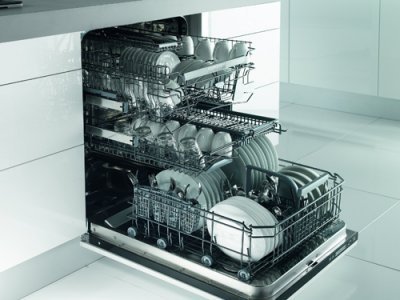
The manufacturers of dishwashers state that are, and for the following reasons:
1. Dishwashers use hotter water throughout the wash cycle: killing more germs. Independent studies have indicated that dishes need to be washed in water that is above 60 degrees, but many people tend to wash dishes in water that is only 27 degrees.
2. When the wash cycle is over the dishes are dry, therefore no cloth – which may contain germs – is needed to dry the dishes and transfer germs onto them. Likewise, even if the cloth is new, germs may be transferred from a persons hands onto the cloth, and then onto the dishes.
3. If dishes are left to dry on a rack after hand washing, dust can accumulate onto the dishes, whereas, with a dishwasher, the dishes are dried within an air tight container.
4. The sponge that is used during hand washing can accumulate germs throughout it’s use, which lower hygiene, and increases the cost of hand washing if it is continually replaced to improve the hygiene of hand washing.
5. Many dishwashers include a ‘hygiene’ or ‘intensive’ wash cycle that increases the temperature of the wash to over 75 degrees. This ensures that hygiene sensitive items – like a babies milk bottle – will have a reduced risk of contracting germs.
6. When hand washing, there is the risk of human error, where an item is not cleaned thoroughly. The likelihood of an error being made is far higher with hand washing than when the wash cycle is conducted by a machine.
7. It’s been suggested by some detergent manufacturers than their products feature more powerful ingredients than are found in hand washing solutions.
Is glass safe in a dishwasher without it chipping?

The wash cycle of a dishwasher will not chip glass if the glass is placed securely within the dishwasher rack; however, if glass moves during the wash cycle – if it is not placed securely – then the glass may chip if it falls against another item.
Stemmed glassware (wine glasses) need to be placed and removed carefully from a dishwasher, and some companies sell stemmed glassware holders to ensure that the glassware is kept in place throughout the dishwasher cycle.
Therefore, assuming the glassware is placed securely within the dishwasher rack: there is no reason to worry about the effects of the dishwasher wash cycle: the wash cycle and the detergent used will not chip the glassware.
However, while a dishwasher wash cycle will not damage glassware so severely as to chip it, over time it can produce etching on the glassware. Etching occurs over time and produces an uneven pitted surface on the glassware.
The damage is nowhere near as severe as chipping, but it is permanent damage nonetheless. Etching typically has two causes:
1) the water temperature is too high during the wash cycle
2) the dishwasher used is in a soft water area and too much detergent is being used. Soft water contains less mineral grains
(0-3) compared to hard water
(9-12) and requires less detergent to counterbalance these grains.
Another issue that affects glass cleaned in a dishwasher is cloudy glassware; after the wash cycle the glassware will be clean but it will look smeared and cloudy. Cloudy glassware can have a number of causes, but it is usually caused by hard water deposits (calcium and magnesium).
The answer to cloudy glassware is to ensure the salt reservoir (if hard water is the issue) is full or to use more detergent. Due to glassware not being ‘soiled’ by food it does not require as much soapy water as dishes, but this only applies if the water used in the wash cycle is soft water.
Hard water contains more mineral grains and requires more detergent to counterbalance the extra grains in the water. If hard water and limescale is leaving marks on your glassware then soaking the glasses in a white vinegar and soapy water solution should remove the limescale marks.
How many utensils and items can a dishwasher hold?
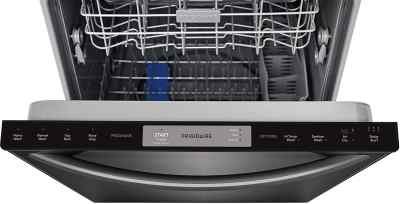
Dishwashers are designed to hold a variety of different utensils and items, and the term manufacturers use to describe the variety of items a dishwasher can hold is a place setting. One place setting is a combination of the following items:
Dinner plate
Dessert plate
Bowl
Glass tumbler
Tea cup and saucer
Knive
Fork
Soup spoon
Dessert spoon
Teaspoon
Serving spoon
A typical dishwasher can hold between 10-12 place settings; which is all of the above items multiplied ten or twelve times. Compact dishwashers hold 8 or less place settings and large dishwashers can hold 14 or more place settings.
The largest dishwashers usually hold 15 place settings; some 15 place setting dishwashers are the: AEG F67732M0P, AEG ProClean F88709W0P, and HOTPOINT Ultima FDUD 51110X. Dishwashers that hold 16 place settings are unusual but do exist; such as the: HOOVER Wizard DYM762TWIFI.
Large dishwashers do, on average, consume more water and energy: the average water consumption for 10 place setting dishwashers is around 9 liters per cycle and for 14 place setting dishwashers is around 11 liters per cycle.
However, the energy consumption of dishwashers is also based upon the built quality and price of the dishwasher: for example, the Bosch SMV69P15GB has 14 place settings but only consumes 9.5 liters per cycle (it costs over £600) and the Beko DFC04210S has 12 place settings but consumes 15 liters per cycle (it costs £220).
How much time does a dishwasher take to clean dishes?

There is no standard time that it takes: it depends upon the dishwasher in question and the wash cycles that it has. The time it takes a dishwasher to complete a wash cycle and clean dishes varies between thirty minutes and three hours. For example, the Miele G4920 SCi CLST has the following wash cycles:
– Economic
– Intensive 75°
– Normal 55°
– SensorWash
– SensorWash gentle
Each of these wash cycles takes a different length of time to clean dishes; therefore, a standard ‘one size fits all’ time cannot be provided for how long a dishwasher will take to clean dishes.
It should also be noted that 5 wash cycles is fairly low; other dishwashers, like the Siemens SN578S00TG, have eight wash cycles: Auto 35-45°C, Auto 45-65°C, Auto 65-75°C, Economy 50°C, Glass 40°C, Pre rinse, Quick wash 45°C, Night program 50°C.
Most dishwashers include a ‘Quick wash’ cycle, and, by it’s name alone, highlights that different wash cycles take a different amount of time to end.
Generally speaking, a quick wash cycle takes 30 minutes, a normal wash cycle takes between 90 minutes and two hours, and an economic wash cycle takes between two and three hours.
Advanced dishwashers, like the Miele G4920 SCi CLST, include a sensor wash cycle: this wash cycle uses a sensor to evaluate how dirty the dishes are and then adjusts the length of the wash cycle to efficiently use the least amount of water and energy to clean the dishes.
Can a dishwasher clean plastic?

Dishwashers can clean plastic dishes and utensils, but manufacturers usually state that the plastic should be “microwave safe”.
The problem with plastic items is the fact that there is no standard substance as “plastic”: plastic encompasses a wide range of materials. Two popular plastics are bisphenol-A (hard plastic) and phthalates (soft plastic).
The next thing to consider is what is meant by the term “microwave safe”: it usually means that the plastic will not melt when used in a microwave and will not burn anyone using it.
However, it does not necessarily mean the plastic is safe for your health. In the US, there has been scientist debate between the Food and Drug Administration (FDA) and Frederick vom Saal – a University of Missouri biologist – Frederick vom Saal has been stated as saying: “There is no such thing as a safe microwave-able plastic”.
Scientists, like Frederick vom Saal, believe plastics like bisphenol-A (BPA) can leak chemicals into food and are inherently unsafe to public health.
Whereas the scientist studies – conducted on rats – by the FDA have suggested BPA is safe. Therefore, while “microwave safe” plastics will not melt in a dishwasher, it is uncertain whether they may contaminate other items in the dishwasher by leaking chemicals.
Can steel be safely cleaned by a dishwasher?

Most manufacturers state there is no health and safety reason why you cannot clean steel and stainless steel in a dishwasher. Bosch, for example, say it is safe to clean steel kadhais, pots, pans, knives, cutlery and utensils.
The problem with cleaning steel and stainless steel items in a dishwasher is the effect it has upon the steel. Many dishwashers owners have complained about their steel items becoming rusty when cleaning them in a dishwasher.
The most common steel item that appears to rust is stainless steel knives; the composition of steel knives is different to other steel cutlery. Why does steel and stainless rust in a dishwasher? there are a number of possible causes:
The steel reacting to the salt included in detergents and salt used by dishwashers located in soft water areas.
Acid that is contained in some foods that comes into contact with the steel during a wash cycle.
If the steel touching other types of metals during the wash cycle – like silver or cooper.
The quality of the steel is of a low standard.
Rusting usually occurs on the weak points of the steel; typically lines within the steel’s design. Some stainless steel come with a dishwasher “safe” certificate/rating.
The most common cause of rusting is usually due to the salt used by a dishwasher; for example, salt that is used to grit icy road conditions is the main cause of rusting in automobiles.
Can dishwashers create pitting on metal utensils?
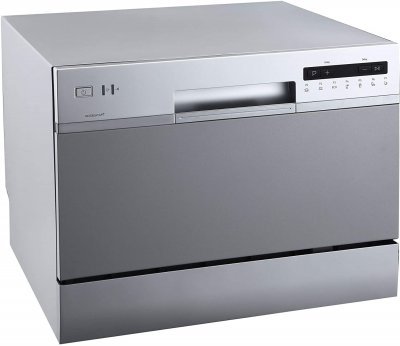
Pitting, as the word suggests, is where small holes, called ‘pits’, are embedded into the surface of metal utensils. Pitting is permanent and is therefore seen as a process which damages metal items.
Pitting can occur on any type of metal item, but it commonly occurs on silver and stainless steel utensils. Pitting can result from using a dishwasher to clean metal items, and dishwashers are more likely to cause pitting in comparison to hand washing metal utensils in a sink.
There are a number of reasons why pitting can be produced by a dishwasher:
1) an electrolytic spark that is produced when items made from different metals (steel and silver) touch;
2) low quality metal that has imperfections in it’s design which are exasperated by the salt and acid found in a dishwasher wash cycle;
3) when metals (like copper and silver) touch the stainless steel tub of the dishwasher.
The solution to avoiding pitting is ensuring that different metals do not touch when they are placed in the dishwasher tub, and to ensure that low quality stainless steel is not washed in a dishwasher.
Only place high quality stainless steel – which does not include the impurities which can create pitting – in a dishwasher; quality stainless steel usually comes with a dishwasher “safe” promise.
Finally, ensure the dishwasher tub has the minimum of salt and acid in it: carefully fill the ‘dishwasher salt’ container and remove any spills, and rinse excess salt and acid from items placed in the dishwasher.
Once pitting has occurred there are no ways to ‘fix’ the issue; the metal has been permanently damaged.
There is a rattling noise during the dishwasher wash cycle?

The rattling noise may be due to a malfunction with the dishwasher’s components – and would require a engineer to diagnose the issue – but the most common cause of a ‘rattling’ or ‘banging’ noise is due to the dishwasher not being loaded correctly.
When dishes, utensils, pots and pans are not loaded correctly they will knock against one another and against the sides of the dishwasher tub.
Loading a dishwasher correctly is far from difficult: larger items (dishes, pots, pans) are placed on the bottom shelf, and smaller items (cups, glasses) are placed on the top shelf.
It is essential that each item is placed securely into a holder, is level with the shelf, and does not touch other items. Cups, glasses, pots and pans should be placed upside down; due to most of these items being wider at their top than their base.
Finally, the dishwasher tub should not be overloaded so that items do not have enough space to be separate from one another.
What kitchen items should not be cleaned in a dishwasher?

There are a number of materials that should not be placed in a dishwasher, it is not the type of kitchen item that matter but the material that it is made from; assuming the item can fit inside the dishwasher tub. Some materials that should not be washed in a dishwasher are as follows:
Patterned fine china (high pressure jets may fade the pattern over time)
Decorated fine china (high pressure jets may fade the decorations over time)
Cast iron cookware (the salt used in the wash cycle may rust the copper)
Gold-trimmed china
Silver-trimmed china
Lead crystal glass
Cutlery with a wooden handle (the glue which holds the wood in place may loosen)
Utensils with a bone handle (the glue which holds the bone in place may loosen)
Utensils with a pearl handle (the glue which holds the pearl in place may loosen)
It is safe to wash wood, bone and pearl in a dishwasher, the problem is when they are handles for pots and pans, and glue is used to fasten the handle to the metal. Wood may fade, like china, if washed multiple times; which is another issue to consider when cleaning wood in a dishwasher.
Can I recycle my old dishwasher?

In the UK, there are a number of retailers who will remove and recycle your old dishwasher when you buy a new one from them; Curry’s – as of Sept, 2013 – are one such retailer.
In 2013, Curry’s state that they will recycle any electrical item brought to their stores – even if you have not purchased it from Curry’s. Curry’s do no state whether this includes large appliances like dishwashers.
Therefore, if you are looking to replace your old dishwasher with a new one, then there are retailers who will recycle it for free.
However, if you are not planning on replacing your dishwasher, or, have already, but have not had your old one removed: then you need not panic, there are plenty of recycling centers and disposal companies – like Any Junk – who will recycle your dishwasher. Just search google for ‘recycle center’ or ‘appliance disposal service’
It should be noted, however, that not all dishwashers can be adequately recycled – usually dishwashers which were manufactured before 2007 – which means they can only be disposed of at a landfill site. Present day, you should look for the following logo,
This logo signifies that a dishwasher can be recycled. In 2007, the Waste Electrical and Electronic Equipment (WEEE) introduced regulations so that new dishwashers and appliances could be easily recycled; which would help tackle a growing problem of electronic waste at landfill sites.
Dishwashers – especially older ones – can contain toxins and lead: which, when they are left at landfill sites, can contaminate soil and become a health and environmental risk.
What wash programmes do dishwashers have?

The standard dishwasher, as of 2013, will come with four or five wash programmes: which most commonly are,
Intensive – will typically last for 130 minutes
Economy – will typically last for 170 minutes
Quick Wash – will typically last for 30 minutes
Pre-rinse – will typically last for 10 minutes
The names of the above wash programmes are fairly self explanatory; the economy wash is usually recommended for when someone only plans to fill the dishwasher half full or less. The standard dishwasher with the above wash settings will cost in the region of £250-£400.
However, dishwashers at the higher end of the price range (£600+) can come with many more wash programmes. LG, for example, have recently released the ‘TrueSteam Dishwasher’ which has steam wash programmes to combat stubborn stains and dirt; an improvement on the standard ‘intensive’ wash programme.
Another more advanced wash progamme – found in the Miele G5620SC – is the ‘auto sensor’ setting: which aims to use the perfect amount of temperature, water and length of wash for the items placed in the dishwasher;
An improvement on the standard ‘economy’ wash programme. Typically, most wash programmes – no matter how many and how advanced the technique is – are a variation on the four wash progammes listed above; with the exception of wash progammes designed for specific items: such as ‘glass’ and ‘pots and pans’ wash programme.
What is an Eco-friendly dishwasher?

An eco-friendly dishwasher is one with the highest, or a high, energy efficiency rating; the only problem is that energy efficiency ratings improve, and what was once an eco-friendly dishwasher two years ago may not be today.
At present, a dishwasher with a A+++ energy efficiency rating would be described as an eco-friendly dishwasher. Energy efficient dishwashers are viewed as eco-friendly because they:
Diminish the impact upon the environmental (through using less resources)
Alongside lowering household energy bills
Dishwashers with a lower energy efficiency rating, but, with a ‘sensor’ wash programme can also be viewed as eco-friendly: this is because a ‘sensor’ wash programme aims to use the perfect – minimum – amount of energy and water for the task “in-hand”. Listed below are some dishwashers which currently have a A+++ ‘eco-friendly’ energy efficient rating:
MIELE G5620
LG D1484 TrueSteam
SIEMENS iQ700 SN26T595GB
Bosch SMS65E12GB
Dishwasher place settings, what does it mean?
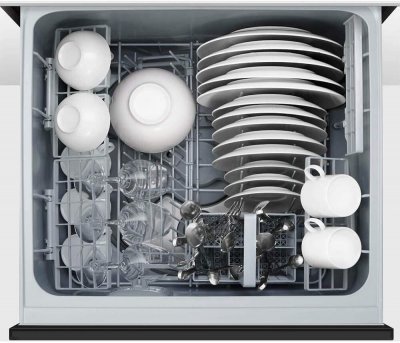
Place settings refers to the volume of items – plates, utensils etc – a dishwasher can hold. One place setting is the following:
dinner plate
dessert plate
dessert spoon
soup plate
soup spoon
a glass
tea cup
tea cup saucer
teaspoon
knife
fork
If you have recently visited a fine dining establishment, restaurant, or a formal dinner party: then you may have noticed that the host had laid out the plates and utensils – listed above – in a formal ‘place’ settings.
The image below displays a rudimentary place setting; which gives an idea of what a place setting is, of course, a formal place setting would include many more items
Full size dishwashers can hold in the region of 10-15 place settings, with 12 being the average. Slimline dishwashers will hold in the region of 9-10 place settings.
Full size dishwashers, and their place settings (12) are specifically designed for an ‘average’ family for 2 adults and 2 children.
With most families eating three meals a day, and with an average of four family members: 12 divided by three (meals) is 4, meaning a full size dishwasher should have enough capacity for a whole day’s dirty plates, utensils, glasses and cups.
Popular colors available for a dishwasher?

Dishwashers do not come in a wide variety of colours; dishwashers, and large appliances in general, are referred to as ‘white goods’,
which should give an indication of the primary colour dishwashers are designed in. Alongside white, silver and black are two other common colours available.
Shown above, are three examples of the most commonly found dishwasher colors; admittedly, black and white are not strictly classified as colors: black being the total absence of color and white including the full spectrum of colors.
However, the above dishwashers are standalone dishwashers: which will probably be placed in a utility room. Many modern kitchens have ‘built-in’ dishwashers: which means the front panel of the dishwasher will have a facade attached to it, to match the units of the kitchen – making the colour of the dishwasher redundant..
Dishwasher installation preparation advice for an engineer?

It is wise to take steps for preparing your home for when an engineer will install a new freestanding dishwasher – the following may not apply to inbuilt dishwashers.
Most retailers – Comet etc – provide an installation service for customers who buy a new dishwasher from them; there is, of course, the option to employ an independent engineer.
With large retail chains, they typically stipulate a set of rules which will outline what their engineers will do, and what they will not.
If you do not adhere to the rules outlined, it will usually result in the engineer leaving the appliance but not installing it; independent engineers tend to be lenient.
The engineer has clear and free access to the area where the dishwasher will be installed.
The dishwasher will fit the space it is intended to be installed in; the engineer will not make space.
Plumbing connections are located closely; required to be within 1.5-2.5 metres.
Waste connections are located closely; required to be within 1.5-2.5 metres.
Electrical connections are located closely; required to be within 1.5-2.5 metres.
Standard dimensions of a freestanding UK , USA & Canada dishwasher?

You are correct in assuming that ‘full size’ ‘freestanding’ dishwashers do have a standard dimension, and, of course, it is wise to question what it is. The following is the standard dimensions of ‘full size’ UK dishwashers,
Height – 84.5cm / 845mm (centimetres/millimetres)
Width – 60cm / 600mm (centimetres/millimetres)
Depth – 60cm / 600mm (centimetres/millimetres)
However, manufacturers do sometimes slightly alter the above dimensions: so, a full size dishwasher may have a height of 85cm instead of 84.5cm, or, a depth of 61cm instead of 60cm.
While there are examples of slight variations from the standard dimensions listed above, they are extremely minor; but, it may be important if you are placing a new dishwasher in a ‘tight spot’.
Alongside freestanding ‘full size’ dishwashers, there are also freestanding ‘slimline’ dishwashers. The difference between a ‘full size’ dishwasher and a ‘slimline’ dishwasher is the width of the appliance.
Therefore, a slimline dishwasher will have the same height and depth – 84.5cm and 60cm respectively – but the width will have a range between 45cm-55cm, rather than 60cm.
Finally, there are ‘compact’ dishwashers, but, this type of dishwasher is usually placed upon a worktop, and is not described as a ‘freestanding’ dishwasher. The dimensions of ‘compact’ dishwashers differ completely to both ‘full size’ and ‘slimline’ dishwashers.
Compact dishwashers, what are they?

Well, ‘compact’ is abit of a giveaway, but, some consumers may confuse the difference between a ‘slimline’ and a ‘compact’ dishwasher.
Slimline dishwashers are ‘freestanding’, and are pretty much identical to ‘standard’ ‘full size’ ‘freestanding’ dishwashers: the difference is the width, which is lower, which, of course, effects the load capacity of the dishwasher.
Compact dishwashers differ completely to both ‘slimline’ and ‘full size’ dishwashers: compact dishwashers are not described as ‘freestanding’, and, instead, are typically placed on a worktop.
The size of a ‘compact’ dishwasher is therefore alot lower than that of a ‘full size’ dishwasher: in the region of half the size, with an average load capacity of 6 ‘place settings’, instead of 12 for a ‘full size’ dishwasher.
Compact dishwashers are obviously designed for homes with a lack of space; apartments etc. Compact dishwashers can be found in many workspaces; where cups and spoons etc will need cleaning. The image below shows a typical ‘compact’ dishwashers,
The size of ‘compact’ dishwashers vary; but, to give an idea of their size, a typical ‘compact’ dishwasher will have a dimension in the regions of: depth 550mm x width 450mm x height 500mm.
What noise level does a quiet dishwasher have?
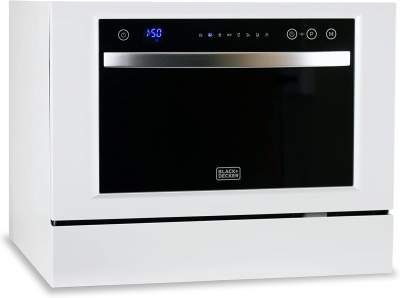
Well, as you may have already assumed, the noise level of dishwashers is improved – made quieter – as new models are released.
Therefore, what was once described as a quiet dishwasher, may no longer be in the present day. However, as of September 2013, a quiet dishwasher would generally described as one which has a noise level lower than 50 dB (dB = decibel level). While there are many dishwashers with a decibel level between 40-50,
Few dishwashers have a sub-40 decibel level; the Bosch Logixx SMS69L32 has a 38 dB level. Some of the quietest dishwashers currently on sale are:
38 dB – Bosch Logixx SMS69L32
38 dB – LG D1484BF
42 dB – Bosch SMS58T12
43 dB – Beko DSFN6839W
43 dB – Miele G5220SC
44 dB – Beko DFN2000X
44 dB – Bosch ActiveWater SMS65E32
44 dB – Miele G5400SC
44 dB – AEG F77012M0P
45 dB – Zanussi ZSF2450S
So, in reality how loud is a decibel level of 40-50: a decibel level of 30 is generally described as whisper quiet, while a decibel level of 60 is generally described as a normal talking voice loudness.
Economic dishwasher: how much water per cycle do they use?

Typically – due to the dishwasher being smaller and having a lower load capacity – ”slimline’ and ‘compact’ dishwashers tend to use a lower amount of water per cycle in comparison to ‘full size’ dishwashers.
However, for the purposes of this page, I will only outline the water usage of ‘full size’ dishwashers.
The water usage of dishwashers – described as water per cycle – in measured in ‘litres of water’ per cycle. At present, an economic dishwasher – in terms of water usage – would use in the region of 6-10 litres of water per cycle; dishwashers with a water usage of 6-7 litres could be described as ‘uber’ economic.
The dishwashers listed below all have a water per cycle usage level that is below 9 litres.
6 litres – Bosch ActiveWater SMS65E32GB
6 litres – Beko DSFN6839W
9 litres – AEG F77012M0P
9.5 litres – Bosch Logixx SMS69L32GB
10 litres – Miele G5220SC
10 litres – Miele G5400SC
10 litres – Siemens iQ700 SN26T595GB
10 litres – Beko DFN2000X
The one issue with comparing ‘full size’ dishwashers based solely on their water per cycle usage: is that the ones with a low usage (sub 10 litres per cycle) tend to have a lower ‘place setting’ (load capacity).
Therefore, you should also compare the water per cycle usage alongside the dishwashers place settings. For example, the BOSCH Logixx SMS69L32GB has a high amount of place settings (14) and a low water per cycle usage of 9.5 litres.
However, the Bosch ActiveWater SMS65E32GB and Beko DSFN6839W are by far the most economic overall: with 13 place settings and a ‘uber’ low water per cycle usage of 6 litres.
How long is the manufacturer’s warranty of most dishwashers?
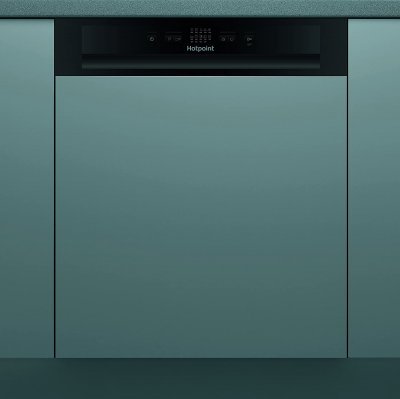
Dishwashers are no different to other electronics and appliances: is that, the standard manufacturer’s warranty is one year.
Of course, many retailers are well known for their extended warranty policies – of course, some of which have had a ‘bad press’.
However, some dishwashers do have a manufacturer’s warranty which is longer than one year; the list below is for dishwashers which are currently on sale (September, 2013) and have a warranty which is longer than one year:
Two-year manufacturer’s warranty – Miele G4210
Two-year manufacturer’s warranty – Samsung DW-FN320T
Two-year manufacturer’s warranty – Samsung DWFG720S
Two-year manufacturer’s warranty – Bosch SMS53E22GB
Two-year manufacturer’s warranty – Russell Hobbs RHDW1B
While some manufacturer’s may only give a one year’s labour guarantee, they do provide a longer guarantee on parts:
Manufacturer’s 5 year parts and 2 years labour guarantee – Baumatic BDWS60SS
Manufacturer’s 5 year parts and 1 year labour guarantee – Hotpoint FDUD43133P
Manufacturer’s 5 year parts and 1 year labour guarantee – Indesit IDF125
Manufacturer’s 5 year parts and 1 year labour guarantee – Hoover HED120
Manufacturer’s 5 year parts and 1 year labour guarantee – Hotpoint FDUD51110X
Dishwasher half load setting, what’s the purpose?

The purpose is to save money, because the dishwasher will adjust the level of resources it uses:
Uses less water
Uses less electricity
Uses less detergent
So, how does the half load function work? well, there are different techniques used by manufacturer’s, but the most common technique is that the dishwasher only uses the spray arm for the upper or lower basket. Therefore, if you planning to use the half load function, you should only fill either the upper or lower basket of the dishwasher.
There is a debate about how economic half load cycles are, and whether the claims of making considerable savings are valid.
Estimates – published by Which? and other consumer watchdogs – have estimated the savings to be 10-15% over a conventional wash cycle. Therefore, if someone is regularly using a half load setting,
They may find that a ‘slimline’ or ‘compact’ dishwasher may save them more money, or, simple wait a day until the dishwasher is full and run the wash cycle.
Ultimately, it could be argued that the half load function is uneconomic: as it probably alters the behavior of people to use it, rather than waiting and running the dishwasher when it’s full – which, according to Which? projected half load savings of 15%, would save more resources and money.
Annual energy consumption of a full size dishwasher?
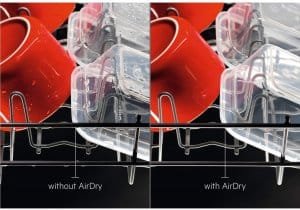
The annual energy consumption of a full size dishwasher will be dictated by the energy rating of the dishwasher in question.
The annual energy consumption of dishwashers is recorded in kWh (kilowatt-hour). Therefore, an appliance which uses 1000 watts of energy will use 1 kilowatt of energy per hour – if the appliance was operating non-stop for a full hour.
Manufacturer’s do publish the annual energy consumption of their dishwashers – based upon an average annual usage level calculated by themselves.
The following is a “rough” estimate of how much annual energy a dishwasher with the following energy star ratings would use:
Energy rating A+++ = 230 kWh
Energy rating A++ = 260 kWh
Energy rating A+ = 290 kWh
Energy rating A = 320 kWh
Based on figures published by British Gas and Scottish Power: on average, 1 kWh of energy costs in the region of 14p (2013). Therefore – based on that figure – a dishwasher with a energy rating A+++ would use £32 of electricity per year, and a dishwasher with a energy rating A would use £44 of electricity per year (rough estimate).
Large capacity dishwasher – what’s the biggest?

Dishwashers are somewhat limited to how much capacity they can offer: this is because dishwashers – full size – adhere to a standard dimension formula – so that they can fit in the majority of UK kitchens.
The height, width and depth of most ‘full size’ dishwashers (in the UK) are:
Height – 84cm
Width – 60cm
Depth – 60cm
While the above dimensions of dishwashers may vary by a few ‘cm’: it does not vary enough to drastically alter how much capacity the dishwasher can provide. Generally speaking, a dishwasher is capable of providing more capacity by cutting down on the thickness of the materials it uses and the size of it’s components.
On average – as of 2013 – most dishwashers sold in the UK have 12 place settings – a place setting is a: dinner/soup plate, dessert/soup/tea cup spoon, glass, cup, knife and a fork.
The largest capacity dishwashers currently on sale tend to have 14 place settings (the biggest has 15, but it is very rare to find); although it is more common to find a dishwasher with 13 place settings.
The following dishwashers – currently on sale in 2013 – have 14 place settings:
Miele G5935SC
Miele G5885SC
Miele G5620SC
Siemens SN66T095
Siemens SN26T597
Neff S72T69X3
Neff S51T69X3
Bosch SMV69T30
Hotpoint FDUD4411X
Bosch SMS58E22
What is the cheapest dishwasher I can buy?

It depends upon the type of dishwasher you are wanting to buy: ‘slimline’ and ‘compact’ dishwashers can easily be bought for under £200, such as Beko’s DL1043W at £199.99 (2013).
When it comes to ‘full size’ dishwashers – a dishwasher with a width of 60cm and 12+ place settings – it becomes difficult to find a ‘brand’ dishwasher for sub-£200. Curry’s own ‘Essentials’ brand, for example, does have a ‘full size’ dishwasher with 12 place settings for £189.99 (2013).
Generally speaking, the cheapest ‘full size’ dishwashers are priced between £250-£300; although some dishwashers can be found for lower than £250, such as Indesit’s IDF125K at £233. The following ‘full size’ dishwashers – September, 2013 – can be purchased from UK retailers (online) for under £300:
Beko DL1243APS
Bosch Classixx SMS40C02GB
Hotpoint FDAL28P
Indesit IDF125K
Hoover DDY062
Zanussi ZDF3023
Kenwood KDW60B13
Baumatic BDWF65W
Beko DSFN6830S
Hoover DDY088T-80
Tabletop dishwashers: how much can they wash?

Tabletop dishwashers are referred to as ‘compact’ dishwashers and are generally half the size of a ‘full size’ ‘freestanding’ dishwasher.
Tabletop dishwashers have a similar width and depth to freestanding dishwashers – 55cm-60cm for width and depth – but the height is half the size – 40cm-45cm in comparison to 85cm for freestanding dishwashers. The images below display this difference:
The storage capacity of a dishwasher – how much they can wash and clean – is calculated in ‘place settings’. One single place setting includes the following,
1 dinner plate.
1 soup plate
1 desert plate
1 tea cup and saucer
1 glass
1 knife
1 fork
1 desert and tea spoon
Basically, the amount of items an individual would require for one full meal. Freestanding dishwashers, on average, have 12 place settings; which is enough for a family of four for all their daily meals.
Tabletop dishwashers – being half the size – have an average of 6 place settings; which means they are ideal for a couple: as there should be enough capacity to wash all the items for their daily meals.
What really a dishwasher is, and what does it do?
The dishwasher is a device/machine which is made for washing dishes and other kitchen items.
It was made to remove the hard work that people had to do in washing their dishes by hand and for restaurants, hotel owners it takes more manpower and time. But the dishwasher came over to all these problems.
It can easily wash your dishes without disturbing you so that you can watch a movie or enjoy your night with your family after a great meal or if you are a restaurant and hotel owner.
Then it will also decrease your manpower and clean dishes very well. You don’t need to hire anyone for washing dishes and it will also save water, energy.
